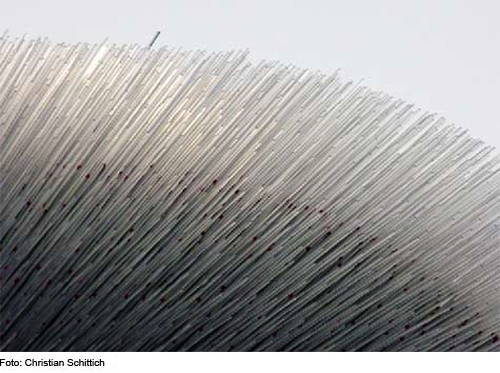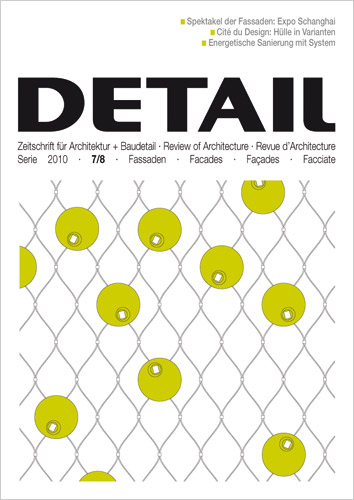Facades (also available as English Edition 5/2010)

After the 2008 Olympics in Beijing, the next global event to take place in China has begun. From 1 May until 31 October the EXPO 2010 is being held in Shanghai. DETAIL was there to analyse the biggest Expo ever and take a look behind the partly innovative, partly decorative facades.
Thomas Heatherwick, the artist and architect behind the much heralded British Expo pavilion, is featured in the Documentation section. Crinkled, thin stainless steel foil is long-lasting, pretty and – when you roll it thinly enough – not too expensive, he says.
The two apartment towers by Diener and Diener on Antwerp’s harbour also reflect their surroundings. Just like in old office blocks, the large windows have different forms, mixing offset casement windows and fixed panes. The opaque sections of the punctuated facade are also covered with glass, behind which shimmers an aluminium coating that reflects the open sky and the water below.
Tobias Wulf and Carsten Roth construct their facades with two-dimensional panels and give them a sense of depth and practical space with generous balconies. While Wulf has given a Stuttgart care home an elegant, grey stucco facade with white window frames, Roth plays with the contrast of smooth fair-faced concrete and the warm tone of wooden panels. an a tiled facade breathe? DSDHA have integrated a local ventilation system in the brick facade of their school in England. From the outside almost nothing can be seen. With many apartment buildings, a full renovation of the facade would be a good idea, but many shy away from both the effort and the inevitable complaints from residents. Artur Schankula presents his own innovative system made from insulated wooden panels. The basic version offers an efficient, sustainable and affordable new building envelope.
Move up a level and the next version has an integrated ventilation system and heat recovery. He also offers a version with integrated ventilation system and solar energy collector to pre-heat the outside air. The main advantage with Schankula’s creations is that they are pre-finished in a factory and can be fitted to the exterior of a building in a short time, meaning less hassle for residents and a minimum of equipment.

